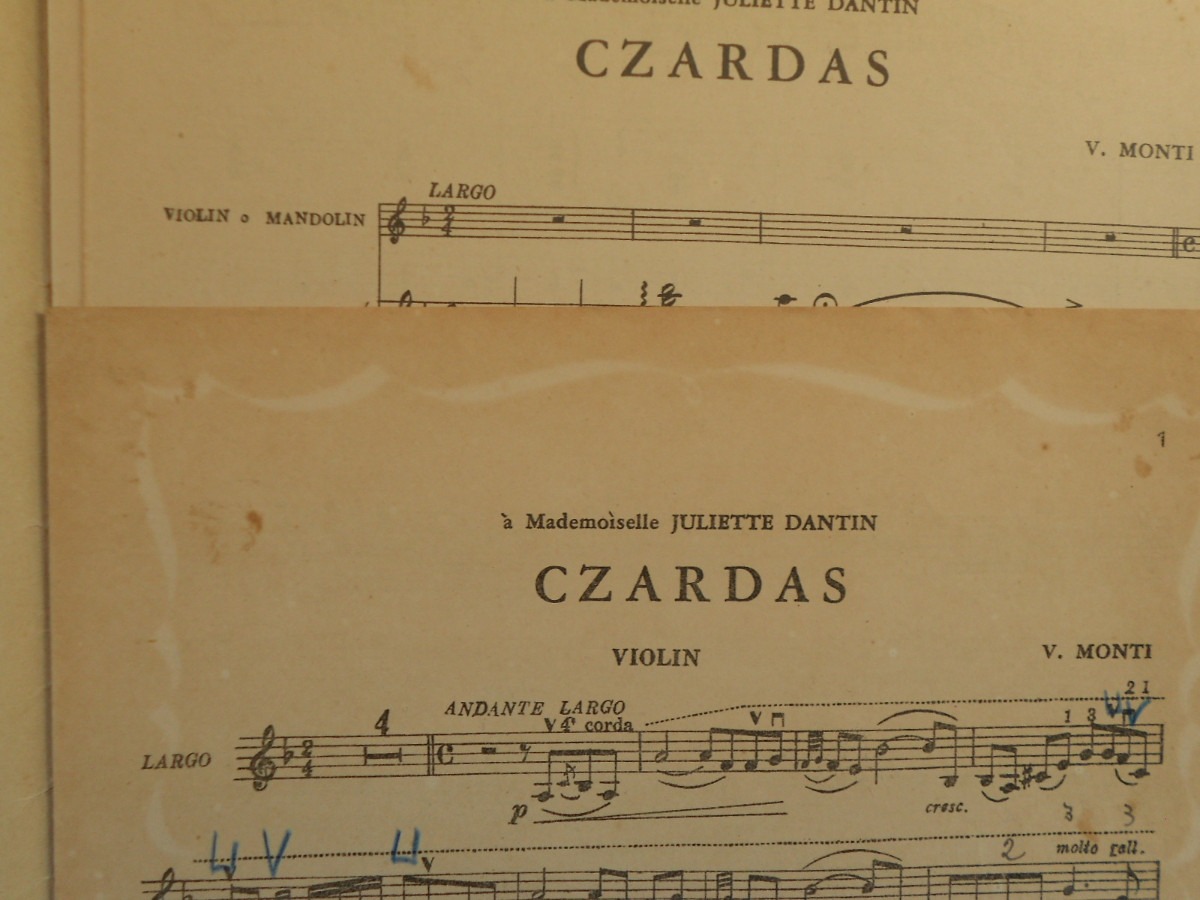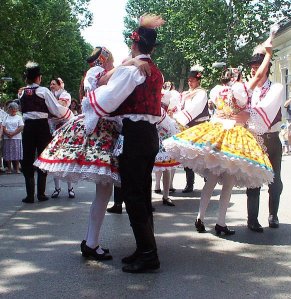
After a concert, Mark Stryker asked Isaac Stern (77 years old at that time) how did he retain his artistry at such an age. Isaac replied “Technique is not music, music is the thousandth of a millisecond between one note and another; how you get from one to the other – that’s where the music is.”: [abridged from “Prelude” of “The Mastery of Music” by Barry Green].
The essence of music, the interpretation of it, is the soul of a musician. Here, I have collected from YouTube the performances of several violinists on Vittorio Monti’s “Csardas”. The violinist came from many cultures – Germany, British, Korean, Japanese, Chinese, Danish, American and Hungarian. Besides the differences in their playing techniques, the ways of interpreting the music covers a wide range. “Csardas” is Hungarian dance music and we may think it is better interpreted by those with Eastern European culture background. I will leave the conclusion to you.
_____________________________________________
Techniques – Sautille; Harmonics [from Violin Master Class]
- Always start the sautillé stroke on the string.
- Use only a wrist motion.
- Start a tremolo with your wrist in the upper half then move to the middle until the bow starts bouncing.
- The more you press, the more it bounces.
- Sautillé works slower near the balance point, faster near the middle and the upper half.
- The bow bounces best with full hair. You can change the sound by tilting the bow.
- Play close to the bridge
- Lots of bow speed
- Lots of bow pressure
- Tilt your bow
- No martelé
____________________________________________
From Wikipedia
The origin of the Csárdás can be traced back to the 18th century Hungarian verbunkos, used as a recruiting dance by the Hungarian army.

The Csárdás is characterized by a variation in tempo: it starts out slowly (lassú) and ends in a very fast tempo (friss, literally “fresh”). There are other tempo variations, called ritka csárdás, sűrű csárdás and szökős csárdás. The music is in 2/4 or 4/4 time. The dancers are both male and female, with the women dressed in traditional wide skirts, usually colored red, which form a distinctive shape when they whirl.
Classical composers who have used csárdás themes in their works include Emmerich Kálmán, Franz Liszt, Johannes Brahms, Johann Strauss, Pablo de Sarasate, Pyotr Ilyich Tchaikovsky and others. Probably the best-known csárdás is the composition by Vittorio Monti written for violin and piano. This virtuosic piece has 5 tempo variations.
________________________________________________________
The selected video clips:
1. http://www.youtube.com/watch?v=0ID_3qMY6eM&feature=related
The first video is by Jonathon Miron (violin) and Ina Ham (piano) performed for Violin Master Class.
2. http://www.youtube.com/watch?v=JAT4Vl_ulfk&feature=related
Dave Garrett played “Csardas” according to the original score. His sautille speed is very fast. You can see that he used only wrist motion in sautille. The harmonics were very clear and clean.
3. http://www.youtube.com/watch?v=CaQ1-1-Z6ak&feature=related
Lei Wang and the Brussels Philharmonic Orchestra performed Monti’s Czardas conducted by Rik Ghesquière. This is a beautifully executed performance with delicate balance of technique and emotion.
4. http://www.youtube.com/watch?v=zdMzdFTIhhA&feature=related
A brilliant performance by Chinese violinist Chuanyun Li. Superb techniques and fiery performance. More about him on web site.
5. http://www.youtube.com/watch?v=Op7GsUAiRnM&feature=related
Joo Young Oh played with improvising passage at the beginning. His biography was attached with the video clip.
6. http://www.youtube.com/watch?v=26yzhNtKLcE&feature=related
Typical style of Nigel Kennedy’s playing that has fast speed and lots of decorative/improvising passages. His sautille plays involved movements of forearm. Look how he interacted with the audience!
7. http://www.youtube.com/watch?v=8-0sH720yYE&feature=related
“This is footage of Victor Borge and violinist Anton Kontra improvising during a spontaneous encore. The music suggested for the encore is a selection that Borge had heard but never played before. Incredible! They are like two jazz musicians conversing with their instruments.” — quote from.
8. http://www.youtube.com/watch?v=L3fYZDqb7qw&feature=related
The performance of József Lendvay & Friends was both breathtaking and entertaining. More on József Lendvay can be found at web site.
9. http://www.youtube.com/watch?v=j8Mm9WSv05M&feature=related
This video clip shows the contemporary Jazz style interpretation of “Csardas” by Taro Hakase & Iwao Furusawa. More on Taro’s career can be found in web site. Look at how the players communicate to each other. Their performance was so creative and injected so much fun into the music.
10. http://www.youtube.com/watch?v=BF9uQI-SRv4&feature=related
Played by Hungarian-born Jass violinist Illenyi Katica. She played so well that there is no ‘garbage” between the notes. She played accurately on the fast passages and expressively/passionately on the slow movements. Look at how the audiences were attracted and inspired by her performance and clapped hands with her tempo!